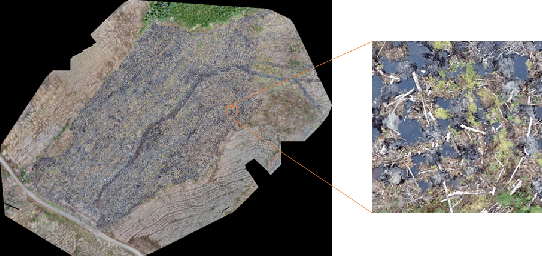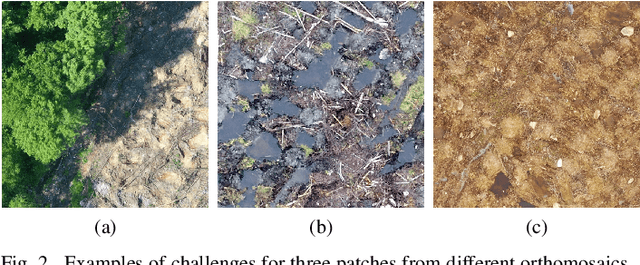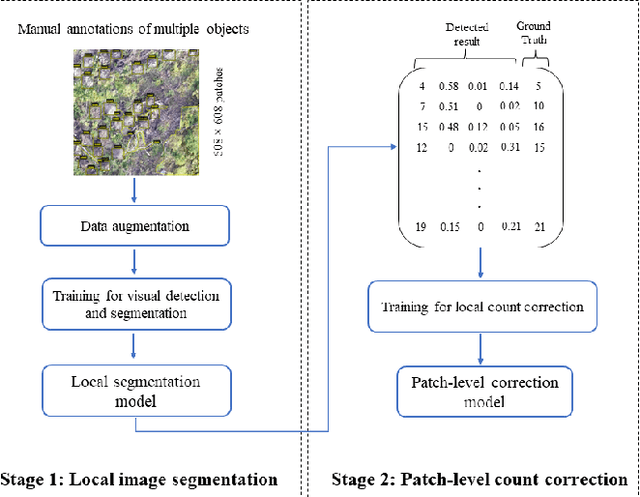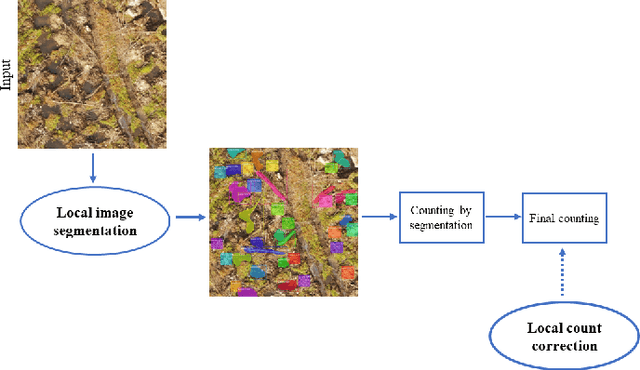Nizar Bouguila
LuKAN: A Kolmogorov-Arnold Network Framework for 3D Human Motion Prediction
Aug 06, 2025Abstract:The goal of 3D human motion prediction is to forecast future 3D poses of the human body based on historical motion data. Existing methods often face limitations in achieving a balance between prediction accuracy and computational efficiency. In this paper, we present LuKAN, an effective model based on Kolmogorov-Arnold Networks (KANs) with Lucas polynomial activations. Our model first applies the discrete wavelet transform to encode temporal information in the input motion sequence. Then, a spatial projection layer is used to capture inter-joint dependencies, ensuring structural consistency of the human body. At the core of LuKAN is the Temporal Dependency Learner, which employs a KAN layer parameterized by Lucas polynomials for efficient function approximation. These polynomials provide computational efficiency and an enhanced capability to handle oscillatory behaviors. Finally, the inverse discrete wavelet transform reconstructs motion sequences in the time domain, generating temporally coherent predictions. Extensive experiments on three benchmark datasets demonstrate the competitive performance of our model compared to strong baselines, as evidenced by both quantitative and qualitative evaluations. Moreover, its compact architecture coupled with the linear recurrence of Lucas polynomials, ensures computational efficiency.
Improving 3D Semi-supervised Learning by Effectively Utilizing All Unlabelled Data
Sep 21, 2024Abstract:Semi-supervised learning (SSL) has shown its effectiveness in learning effective 3D representation from a small amount of labelled data while utilizing large unlabelled data. Traditional semi-supervised approaches rely on the fundamental concept of predicting pseudo-labels for unlabelled data and incorporating them into the learning process. However, we identify that the existing methods do not fully utilize all the unlabelled samples and consequently limit their potential performance. To address this issue, we propose AllMatch, a novel SSL-based 3D classification framework that effectively utilizes all the unlabelled samples. AllMatch comprises three modules: (1) an adaptive hard augmentation module that applies relatively hard augmentations to the high-confident unlabelled samples with lower loss values, thereby enhancing the contribution of such samples, (2) an inverse learning module that further improves the utilization of unlabelled data by learning what not to learn, and (3) a contrastive learning module that ensures learning from all the samples in both supervised and unsupervised settings. Comprehensive experiments on two popular 3D datasets demonstrate a performance improvement of up to 11.2% with 1% labelled data, surpassing the SOTA by a significant margin. Furthermore, AllMatch exhibits its efficiency in effectively leveraging all the unlabelled data, demonstrated by the fact that only 10% of labelled data reaches nearly the same performance as fully-supervised learning with all labelled data. The code of our work is available at: https://github.com/snehaputul/AllMatch.
Clarifying Myths About the Relationship Between Shape Bias, Accuracy, and Robustness
Jun 07, 2024



Abstract:Deep learning models can perform well when evaluated on images from the same distribution as the training set. However, applying small perturbations in the forms of noise, artifacts, occlusions, blurring, etc. to a model's input image and feeding the model with out-of-distribution (OOD) data can significantly drop the model's accuracy, making it not applicable to real-world scenarios. Data augmentation is one of the well-practiced methods to improve model robustness against OOD data; however, examining which augmentation type to choose and how it affects the OOD robustness remains understudied. There is a growing belief that augmenting datasets using data augmentations that improve a model's bias to shape-based features rather than texture-based features results in increased OOD robustness for Convolutional Neural Networks trained on the ImageNet-1K dataset. This is usually stated as ``an increase in the model's shape bias results in an increase in its OOD robustness". Based on this hypothesis, some works in the literature aim to find augmentations with higher effects on model shape bias and use those for data augmentation. By evaluating 39 types of data augmentations on a widely used OOD dataset, we demonstrate the impact of each data augmentation on the model's robustness to OOD data and further show that the mentioned hypothesis is not true; an increase in shape bias does not necessarily result in higher OOD robustness. By analyzing the results, we also find some biases in the ImageNet-1K dataset that can easily be reduced using proper data augmentation. Our evaluation results further show that there is not necessarily a trade-off between in-domain accuracy and OOD robustness, and choosing the proper augmentations can help increase both in-domain accuracy and OOD robustness simultaneously.
* 7 pages, 4 figures
PatchSVD: A Non-uniform SVD-based Image Compression Algorithm
Jun 07, 2024Abstract:Storing data is particularly a challenge when dealing with image data which often involves large file sizes due to the high resolution and complexity of images. Efficient image compression algorithms are crucial to better manage data storage costs. In this paper, we propose a novel region-based lossy image compression technique, called PatchSVD, based on the Singular Value Decomposition (SVD) algorithm. We show through experiments that PatchSVD outperforms SVD-based image compression with respect to three popular image compression metrics. Moreover, we compare PatchSVD compression artifacts with those of Joint Photographic Experts Group (JPEG) and SVD-based image compression and illustrate some cases where PatchSVD compression artifacts are preferable compared to JPEG and SVD artifacts.
* 8 pages, 6 figures
Unveiling Hidden Factors: Explainable AI for Feature Boosting in Speech Emotion Recognition
Jun 01, 2024Abstract:Speech emotion recognition (SER) has gained significant attention due to its several application fields, such as mental health, education, and human-computer interaction. However, the accuracy of SER systems is hindered by high-dimensional feature sets that may contain irrelevant and redundant information. To overcome this challenge, this study proposes an iterative feature boosting approach for SER that emphasizes feature relevance and explainability to enhance machine learning model performance. Our approach involves meticulous feature selection and analysis to build efficient SER systems. In addressing our main problem through model explainability, we employ a feature evaluation loop with Shapley values to iteratively refine feature sets. This process strikes a balance between model performance and transparency, which enables a comprehensive understanding of the model's predictions. The proposed approach offers several advantages, including the identification and removal of irrelevant and redundant features, leading to a more effective model. Additionally, it promotes explainability, facilitating comprehension of the model's predictions and the identification of crucial features for emotion determination. The effectiveness of the proposed method is validated on the SER benchmarks of the Toronto emotional speech set (TESS), Berlin Database of Emotional Speech (EMO-DB), Ryerson Audio-Visual Database of Emotional Speech and Song (RAVDESS), and Surrey Audio-Visual Expressed Emotion (SAVEE) datasets, outperforming state-of-the-art methods. These results highlight the potential of the proposed technique in developing accurate and explainable SER systems. To the best of our knowledge, this is the first work to incorporate model explainability into an SER framework.
* Published in: Springer Nature International Journal of Applied Intelligence (2024)
Iterative Feature Boosting for Explainable Speech Emotion Recognition
May 31, 2024



Abstract:In speech emotion recognition (SER), using predefined features without considering their practical importance may lead to high dimensional datasets, including redundant and irrelevant information. Consequently, high-dimensional learning often results in decreasing model accuracy while increasing computational complexity. Our work underlines the importance of carefully considering and analyzing features in order to build efficient SER systems. We present a new supervised SER method based on an efficient feature engineering approach. We pay particular attention to the explainability of results to evaluate feature relevance and refine feature sets. This is performed iteratively through feature evaluation loop, using Shapley values to boost feature selection and improve overall framework performance. Our approach allows thus to balance the benefits between model performance and transparency. The proposed method outperforms human-level performance (HLP) and state-of-the-art machine learning methods in emotion recognition on the TESS dataset.
* Published in: 2023 International Conference on Machine Learning and Applications (ICMLA)
Automatic counting of planting microsites via local visual detection and global count estimation
Nov 01, 2023Abstract:In forest industry, mechanical site preparation by mounding is widely used prior to planting operations. One of the main problems when planning planting operations is the difficulty in estimating the number of mounds present on a planting block, as their number may greatly vary depending on site characteristics. This estimation is often carried out through field surveys by several forestry workers. However, this procedure is prone to error and slowness. Motivated by recent advances in UAV imagery and artificial intelligence, we propose a fully automated framework to estimate the number of mounds on a planting block. Using computer vision and machine learning, we formulate the counting task as a supervised learning problem using two prediction models. A local detection model is firstly used to detect visible mounds based on deep features, while a global prediction function is subsequently applied to provide a final estimation based on block-level features. To evaluate the proposed method, we constructed a challenging UAV dataset representing several plantation blocks with different characteristics. The performed experiments demonstrated the robustness of the proposed method, which outperforms manual methods in precision, while significantly reducing time and cost.
Automatic counting of mounds on UAV images: combining instance segmentation and patch-level correction
Sep 06, 2022



Abstract:Site preparation by mounding is a commonly used silvicultural treatment that improves tree growth conditions by mechanically creating planting microsites called mounds. Following site preparation, the next critical step is to count the number of mounds, which provides forest managers with a precise estimate of the number of seedlings required for a given plantation block. Counting the number of mounds is generally conducted through manual field surveys by forestry workers, which is costly and prone to errors, especially for large areas. To address this issue, we present a novel framework exploiting advances in Unmanned Aerial Vehicle (UAV) imaging and computer vision to accurately estimate the number of mounds on a planting block. The proposed framework comprises two main components. First, we exploit a visual recognition method based on a deep learning algorithm for multiple object detection by pixel-based segmentation. This enables a preliminary count of visible mounds, as well as other frequently seen objects (e.g. trees, debris, accumulation of water), to be used to characterize the planting block. Second, since visual recognition could limited by several perturbation factors (e.g. mound erosion, occlusion), we employ a machine learning estimation function that predicts the final number of mounds based on the local block properties extracted in the first stage. We evaluate the proposed framework on a new UAV dataset representing numerous planting blocks with varying features. The proposed method outperformed manual counting methods in terms of relative counting precision, indicating that it has the potential to be advantageous and efficient in difficult situations.
 Add to Chrome
Add to Chrome Add to Firefox
Add to Firefox Add to Edge
Add to Edge